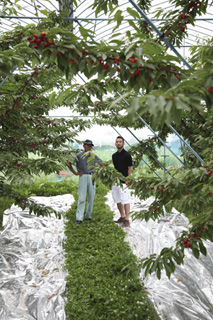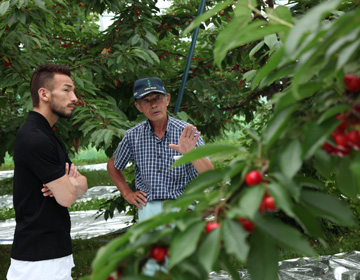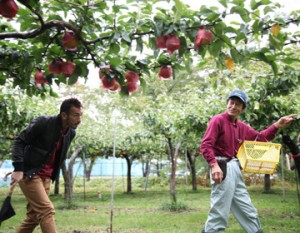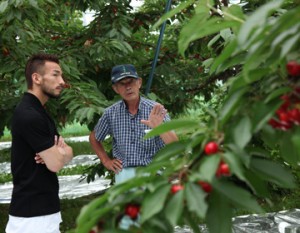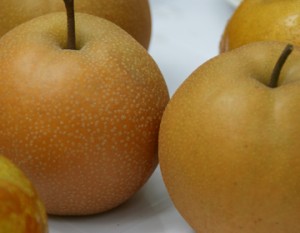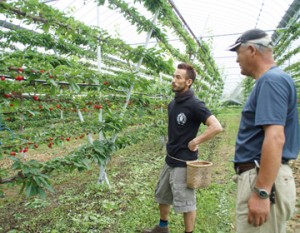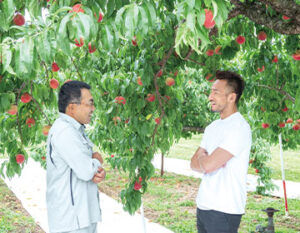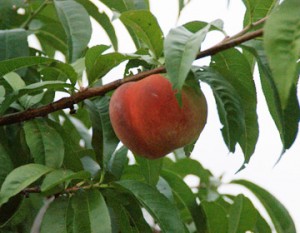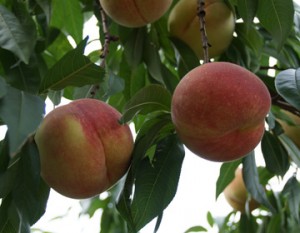Sakuranbo cherries, fruit representing Yamagata
For many, cherries are synonymous with Yamagata Prefecture. As it surpasses any other prefectures in cherry fruit harvest and shipping, and dominates the market with about 70% share, Yamagata Prefecture can be said to be the cherry fruit capital of Japan. And in that cherry fruit capital of Japan, there is a man who is known as the master of cherry fruit growing. We interviewed Kenichi Karube, the cherry fruit master.
The cherries Karube grows are outright delicious. Many farmers across the nation are said to follow his way of growing cherries, and thus his alias “cherry master”.
It was raining when we held the interview. “Rain is the natural enemy of cherries.” said Karube. Sometimes, getting even a little wet by rain can make the fruit split open, making it impossible to sell as merchandise. Today he was well prepared, covering the trees with tents. But before he had these tents, he used to spend the harvesting season worrying, since the season overlaps with the rainy season.
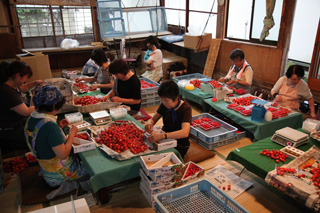
Benishuho, the real star
The most famous brand of cherries may be ”Satonishiki”, but at the time of the interview, the harvest for “Satonishiki” was over. The fruits on the trees were a breed known as “Benishuho”. It is larger than “Satonishiki” and has a higher sugar content. Karube picked a fruit from the tree and handed it to Nakata. A single bite was all it took for Nakata to change his expression. It was unbelievably sweet as a cherry. The sugar content on the Brix scale is about 25, which is equivalent to such fruits as peaches and melons. The texture of the thick flesh is also very good. Satonishiki has the fame but Benishuho has the taste. Said Karube. “It is sweeter, and less sour. Of course, it depends on the individual, but I personally think it’s more delicious than the Satonishiki. That’s why I think it’s a breed that is worth growing.”
Benishuho is one of the several “Beni-” series of cherries developed in the agricultural experiment stations in Yamagata. He fell in love with its taste and focused on growing the breed before it became a staple crop among cherry fruit farmers.
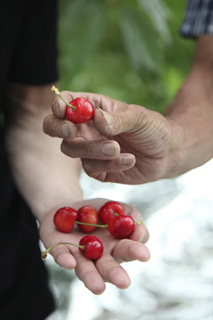
Pruning brings excitement
”I am so surprised with how delicious these cherries are. What is the most important thing about growing cherries?” asked Nakata. “Exposure to sunshine” Karube replied. Unless you have plenty of sunlight shining on the fruits, you are not going to get much taste or good color.
The only thing he can do to improve exposure to sunlight is pruning the branches. “It changes everything about the fruit. The shape, the color, and of course even taste. You pay extra attention when you use your pruning scissors so that the fruit gets enough sunlight. Interestingly enough, if you start pruning too early, the tree will protest.“ He said this as if he was talking about a person.
A cherry tree lives for about 40 years. Karube described it as “about half the age of humans”. It takes seven to eight years for a tree to bear fruit. That’s equivalent to about 15 years for humans, and about 15 is when we used to celebrate Genpuku, or ceremony for reaching adulthood. Then for the next 30 years or so until the tree reaches the end of its life, he will carefully prune the branches, and the tree will answer by bearing delicious cherries. The word “raise” is the best way to describe the process.
Benishuho cherries raised by the cherry master. Try them. You’ll love them.
